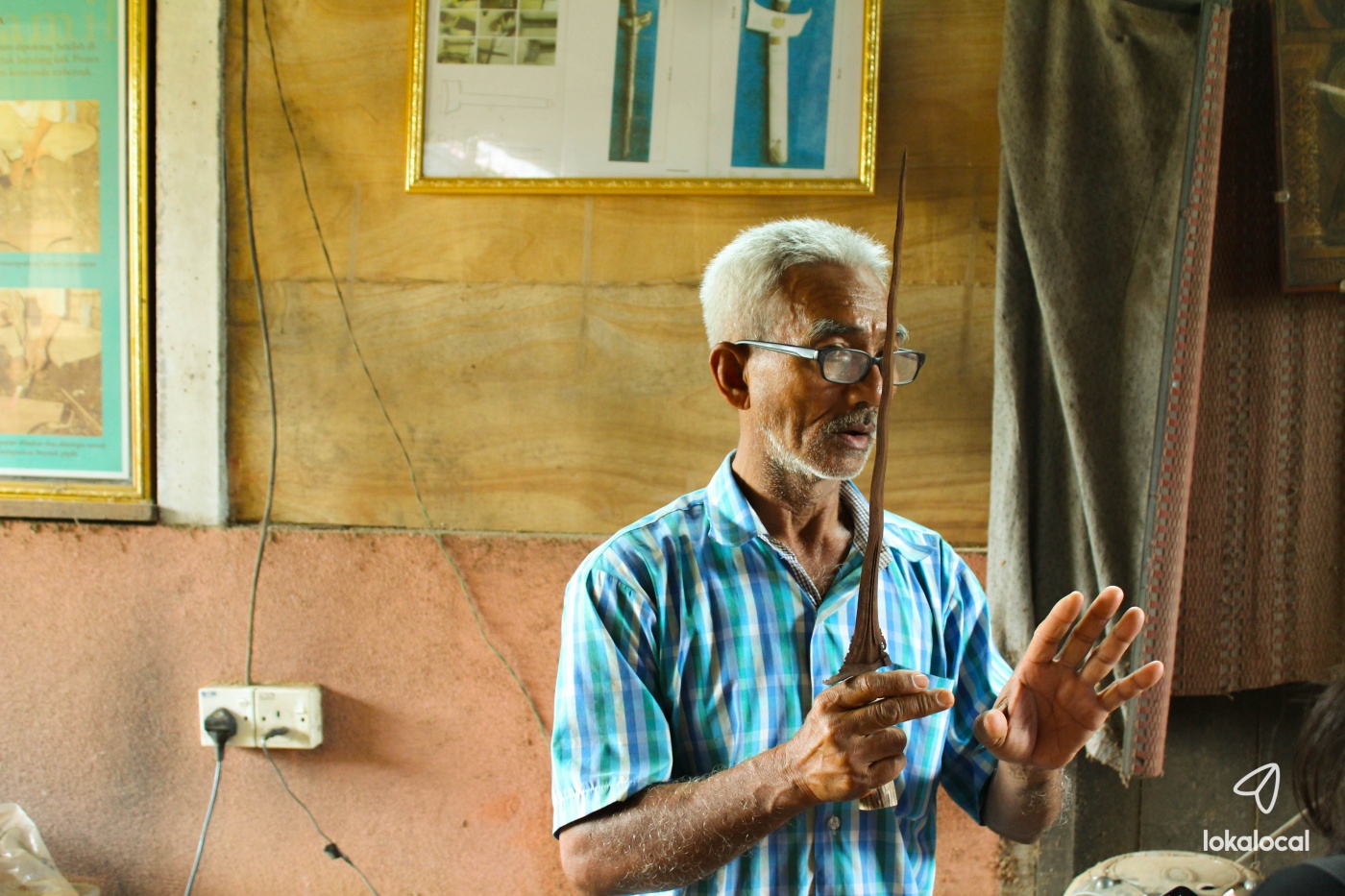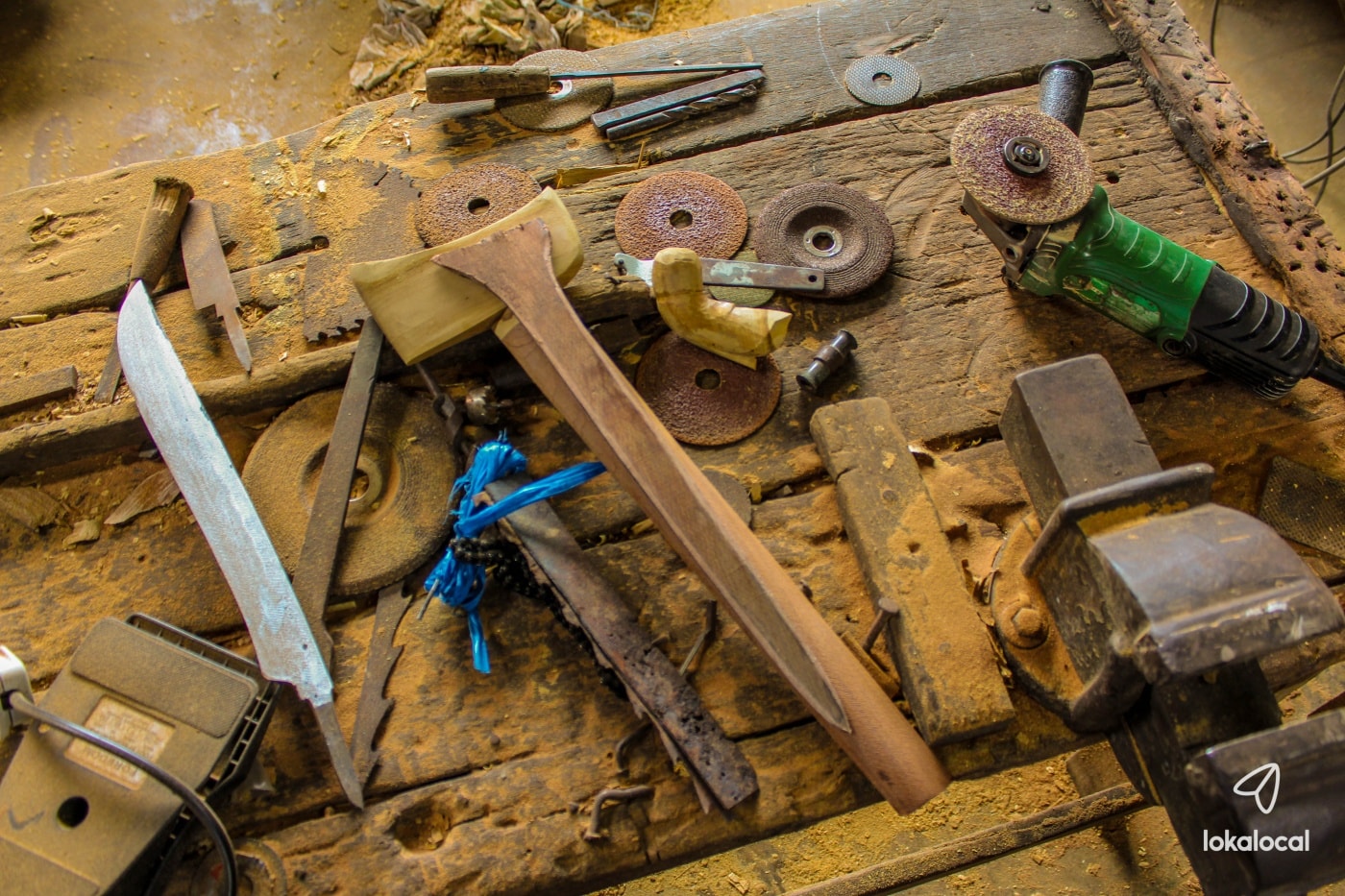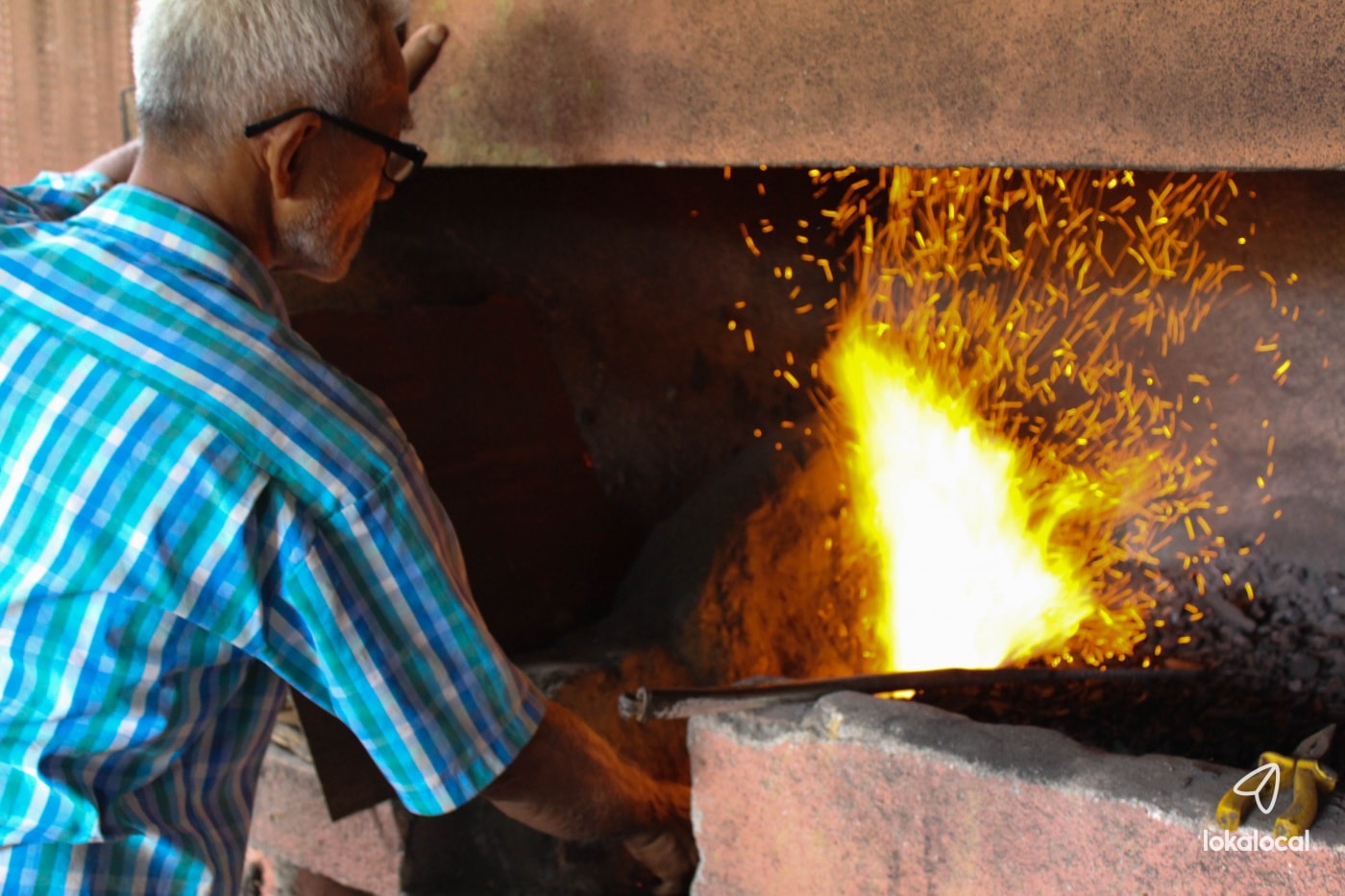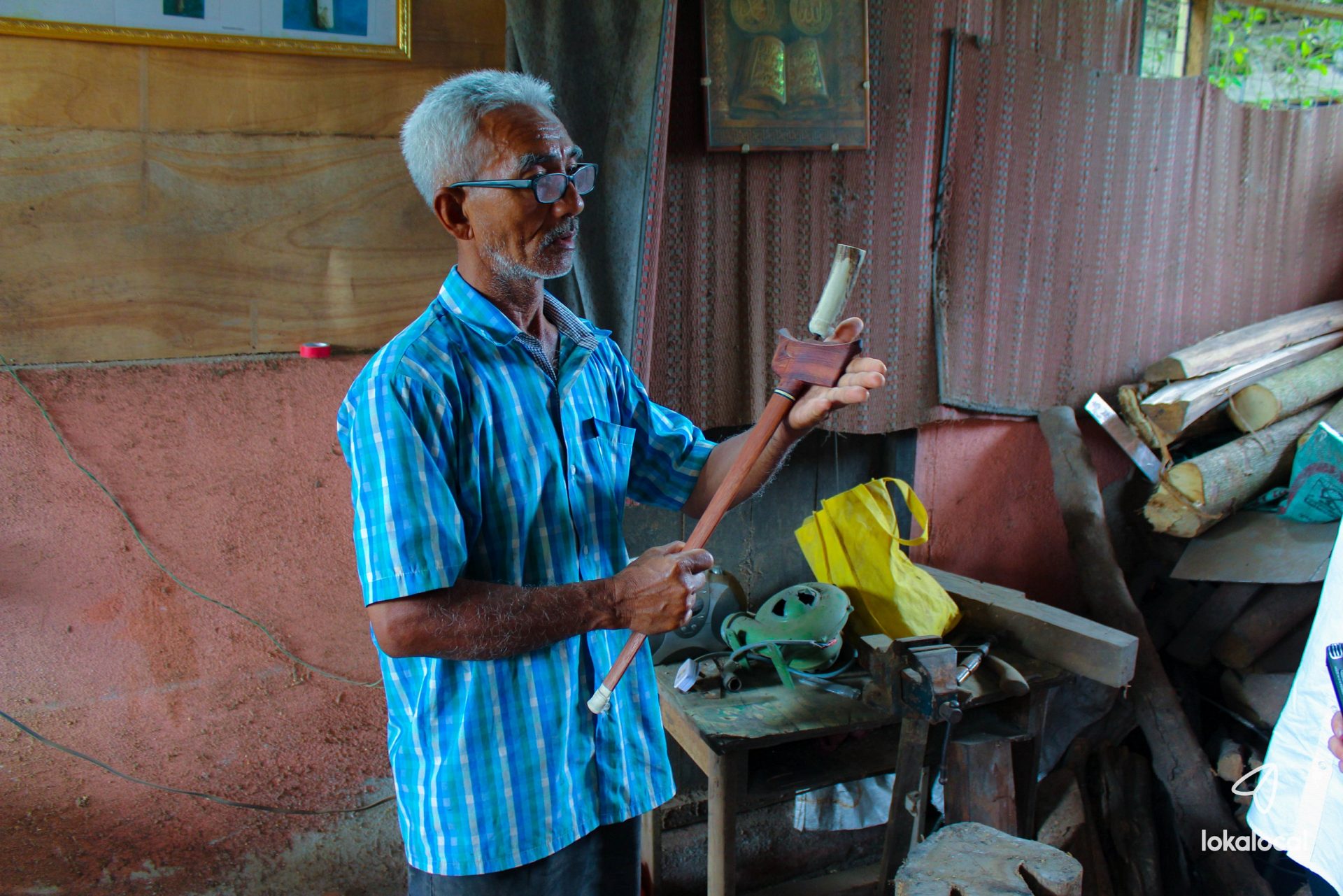Apart from its role as the Royal Town of Perak, Kuala Kangsar is home to the ancient craft of keris-making. There used to be at least 30 keris makers here in the 1960s, but very few remain. The most distinguished keris craftsman of the lot is Abdul Mazin bin Abdul Jamil, or Pak Mazin.
The Keris Maker of Malaysia
Pak Mazin is the fourth generation to practise this blacksmithing trade. Like his father and grandfather, he has even forged keris for royalty, even the Yang di-Pertuan Agung.

This life-long fascination began at the age of ten, when Pak Mazin decided that he would follow in the footsteps of his ancestors. Little did he know back then that he would become one of the keepers of this ancient tradition. It took him only two years to master all the steps, and this is what he has been doing for over five decades.
While members of the royalty still remain his most notable clientele, the 57-year-old also makes keris for the prime minister, politicians and people who are interested in this heritage from around the world.
He has a workshop next to his humble home at Kampung Padang Changkat, Kuala Kangsar, where he crafts keris and shares what goes on behind the scenes to eager guests.
Metal, Might and magic
Everything about the keris, from the components of the metal to the curve of the blade, is intertwined with Malay beliefs and traditions.

Like most weapons within Malay heritage, the blade is traditionally made using seven types of iron materials that begin with the Arabic letter pa.
“It contains seven pa – similar to the letter p – paku, pahar, payung, puting, pisau, pagar, pencebak,” – Pak Mazin
These are metal pieces you can find from everyday items such as nails, knives, chisels, shovels, umbrella frames and fences. Perhaps this dedication to source the materials, on top of their symbolic representations, are the very elements that give the keris its value.
Pak Mazin explains that these iron pieces would be tied together and heated up in a furnace. During a demonstration, he strikes the iron pieces to form the alloy, taking care to hammer out the signature curves of the keris. It would have to be folded at least 21 times to strengthen the blade, a tedious process which can take several weeks or months to complete.

Once the blade is completed, it is polished and doused in a liquid to reveal its fine patterns. It would then be attached to the hilt and complemented by a sheath, both carved in his workshop.
According to Pak Mazin, the keris is historically used as a weapon of self-defence, carried by both men and women around their waist. Many believe that the keris acts as a spiritual object that can bring good or bad luck to its owner.
These days, however, the keris is sought after for different reasons.
“People want to keep it for the next generation,” Pak Mazin adds. Apart from being kept as an heirloom, it is also a ceremonial accessory and a status symbol. During official ceremonies, it is customary for the wielder to kiss the heel of the keris.
Preserving a National Heritage
Pak Mazin spares no expense when it comes to sharing his invaluable knowledge. His son is now helping him in the family business and is likely to take over in the future. At the same time, he welcomes interested people to join him in his workshop.

By sharing the secrets of his trade, he hopes to shed light on this elusive craft, so the future generation can own this heritage too.
Visit Pak Mazin in his workshop by booking his keris making experience at LokaLocal.
"ExpatGo welcomes and encourages comments, input, and divergent opinions. However, we kindly request that you use suitable language in your comments, and refrain from any sort of personal attack, hate speech, or disparaging rhetoric. Comments not in line with this are subject to removal from the site. "


















